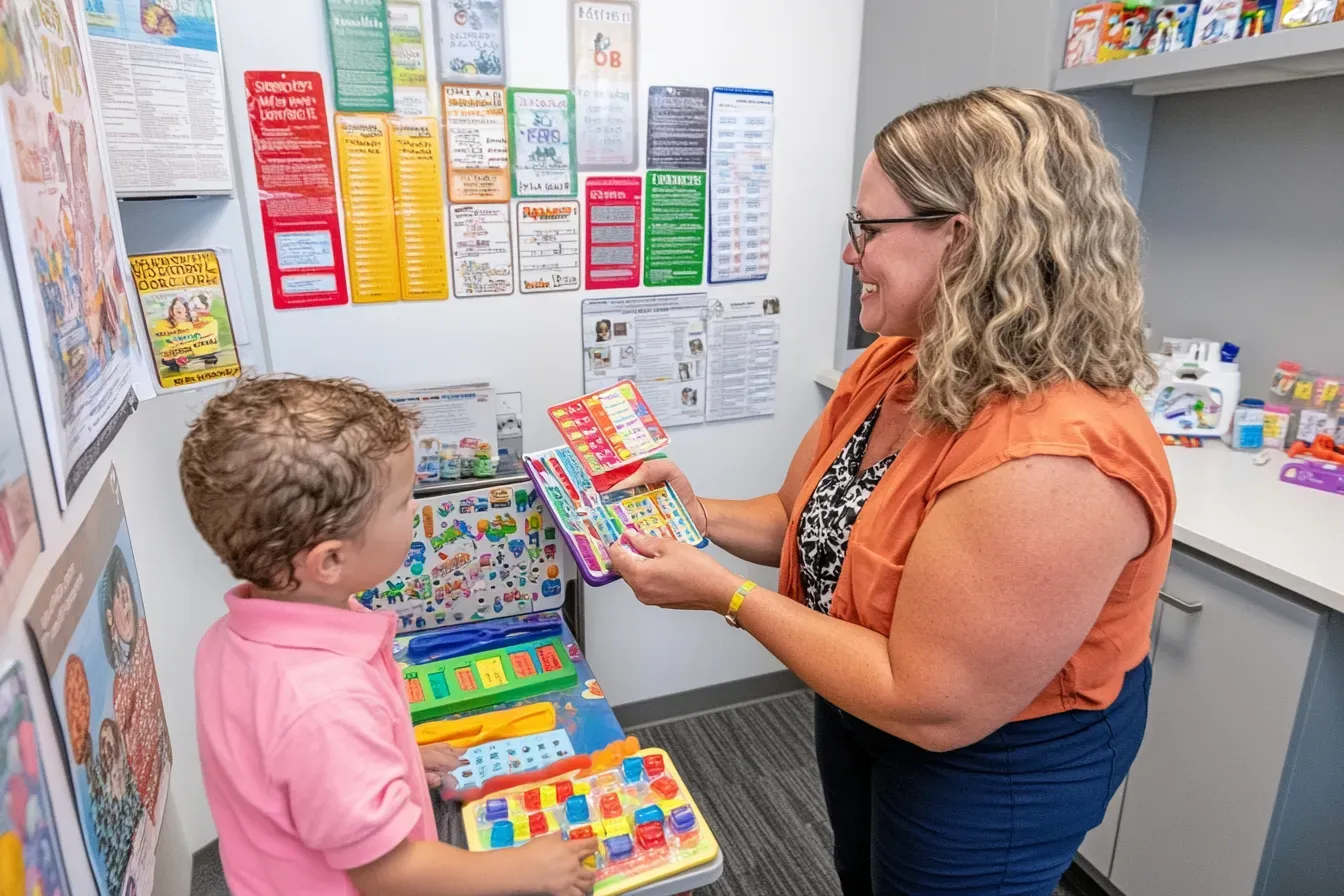Virtual Scavenger Hunt: Ideas, Rules & Tools For Better Team Integration for 2026
The game Pokemon GO could be the epitome of a scavenger hunt game: players go to different locations to “catch'" a pokemon monster. Based on its more than 147 million users and multiple awards including the Mobile Game of the Year award from D.I.C.E, we can safely say that the game received excellent public reception. It also shows the effectiveness of the gameplay design. Pokemon GO continues to attract players of all ages and cultures around the globe.
Nowadays, the space we can explore has been limited by the COVID-19 pandemic. An article published in the American Journal of Public Health (2020) emphasized the importance of “strategies to bolster social support and connectedness" in combatting loneliness due to socially restrictive guidelines in these tough times.
While Pokemon GO has adjusted its game design to stay relevant in the new normal, what has become more popular is the conduct of virtual meetups and the incorporation of play. Popular video conferencing app Zoom has even been a place for Zoom games for team building, including Zoom scavenger hunt activities. Virtual scavenger hunting has also become one of the popular options for activities during online events.
Digital scavenging can serve as an icebreaker, a team-building activity, or in itself an online event. It can serve as a way for people to increase their level of familiarity with each other or to simply connect and alleviate the loneliness that comes with social isolation. This article discusses the benefits and rules of playing the game and gives the reader some virtual scavenger hunt ideas and tips for designing and personalizing the activity.
Virtual Scavenger Hunt Table of Contents
- Benefits of Play in Times of Crisis
- Virtual Scavenger Hunting Rules
- Know Your Hunters
- Scavenger List Ideas
- Tips and Tools for Scavenger Hunting
- How can virtual scavenger hunts enhance your marketing strategy?
- What are the Best Practices for Evaluating Virtual Scavenger Hunts?
- Is a Virtual Scavenger Hunt a Gateway to Career Skill Enhancement?
- How Can You Evaluate the Impact of a Virtual Scavenger Hunt?
- Safety and Accessibility Considerations for Virtual Scavenger Hunts
- Integrating Virtual Scavenger Hunts into Educational and Professional Development
- How Do Virtual Scavenger Hunts Support Academic and Career Advancement?
- What Are the Common Challenges in Organizing Virtual Scavenger Hunts?
- What Future Trends are Driving the Evolution of Virtual Scavenger Hunts?
Benefits of Play in Times of Crisis
There has been growing attention on the psychological impact of social isolation due to the enforcement of lockdowns and physical distancing measures as necessitated by the emergence and spread of COVID-19. An article published in Humanities and Social Sciences Communications states that social isolation is “associated with poor life satisfaction across domains, work-related stress, lower trust of institutions such as central government and business, perceived personal risk for COVID-19, and higher levels of use of substances as a coping strategy" (Clair, 2021, 6).
The negative impact of COVID-19 urges us to collectively find ways to cope better and provide each other support with the help of technology available to us. A successful project manager, for example, tries various online activities to keep employees/team members engaged and productive. Schools, on the other hand, are trying to maximize learning and capture the essence of physical classroom setups. In both cases, one effective intervention is play.
Chanana and Sangeeta (2020) cite short online game sessions as one of the company engagement activities that help sustain motivation and institutional commitment. Similarly, a study published in the International Journal of Advanced Science and Technology posits that introducing games as a work intervention results in increased engagement and efficiency and decreased slack time among employees (Prasad & Rao, 2020).
Play is a valuable activity that can act as a therapeutic agent among children and students (Parker et al., 2020). Research also shows that play improves learning experiences (Taylor, 2020).
With the many benefits that come with play, it is not surprising that people try to incorporate it as an activity like team building games during online meetings or classes. An online scavenger hunt or a virtual treasure hunt are just two of the ways to increase engagement.
Virtual Scavenger Hunting Rules
Here are the steps for designing your own virtual scavenger hunt rules:
- Create a list of items for the scavenger hunt. Depending on the purpose and participants of the game, you may have a theme or other scavenger hunt ideas in mind, based on which you may craft a list of items. Consider the availability of each item in your participants’ immediate environment. Remember, you do not want to stress them out by making them find impossible things. This is not how to make a scavenger hunt productive. You want them to have fun searching.
- Assign a point to each item on the list. Things that are harder to find may correspond to higher points. Let your participants know this and other virtual scavenger hunt instructions clearly at the onset so they can strategize accordingly.
- Decide on the length of the activity. Set a deadline for submission of as many items as participants can collate given limited time. You may want to set a timer for this. When the timer starts, share the list with the participants, and let the hunt begin!
- Allow participants to share the items they collected with the team. Create a post/conversation thread for the participants to share and comment on each other’s finds. This might be just as fun as the game itself or even more.
- Announce the winner/s. The point system you designed will decide the winner of the game. Don’t forget to congratulate not only the winner/s but also everyone for their effort. You may also create an exclusive website by using a domain generator where players can exchange ideas and collaborate.

Know Your Hunters
Design the activity with your participants in mind. Analysis and consideration of the demographic data from your target audience will help you craft your list and implement the activity better. Ask yourself the following questions:
- What age group do they belong? Different activities may appeal more or less to different age groups. Further, participants should have a general idea or background about the theme. You would want to pick a theme that emphasizes age diversity rather than generational gaps.
- What are their common grounds? If your participants are in the same class or are working in the same company, this will not be hard. For employees, you may design a game that is industry-specific or work-related. If you have participants from all over the world, you may need to consider cultural sensitivity.
- What concepts are most familiar to them as a collective? If you want people participating, you must ensure that this activity is designed to include them.
- What are the levels of intimacy in your target group? Some groups may be more open to sharing personal information with one another and some may prefer to put clear boundaries between whatever institution this game is intended for as an activity and home. In the case of the former, you would want to stick with work/subject-related scavenger hunt themes.
Scavenger List Ideas
Here are some theme ideas to get you started crafting your own virtual scavenger hunt list:
- Take a selfie. The list can range from selfies with work-from-home outfits to selfies with the nearest tree. This is a fun theme activity that will also help people move around a little and be creative.
- Quarantine Pack. Adults are more likely to care about disinfecting, but this is great for introducing the concept to children. All of us should be familiar with the items on this list by now: alcohol, face mask, face shield, disinfectant spray, air purifiers, among others.
- The Five Senses. Invite your audience to be in the present moment. If you are tired of brainstorming, gamify it this way. Allow your audience to capture three things they see, smell, hear, feel, and taste.
- Alphabet. Find objects whose names begin with letters A, B, C, and so on. If you are teaching the participants of the game a language, this will be a great activity. In fact, a study showed that it can help students to be engaged in studying words and building other literacy skills (Chen & Greenwood, 2021).
- Shapes and colors. Instructions may go like: Find 5 red, star-shaped objects. This is more challenging due to the combination of two concepts. If you are teaching children, you may want to do two separate scavenger hunt lists and test their knowledge by combining the two on a later activity.
- Solve a riddle. Make the game more challenging by not simply listing items but also encouraging participants to learn and solve what they are looking for in the first place.
- Complete a crossword puzzle. This has the same concept as item number 6, but this is more ideal for visual learners.
- Around the house. You can craft a list of items found in various rooms of a typical house.
- Around the world. This theme is great for teaching geography. Challenge participants to find objects that come from different countries.
- Inside Out. Also known as vibe check among teenagers. Get to know your audience better by asking them to take pictures of things that make them happy, sad, angry, disgusted, or fearsome.
- Food. Favorite dish, breakfast of the day, lunch, you name it. Food is essential, and let’s hope that every one of your participants has food to eat.
- Show-themed. What is a popular show among your participants?
- Collect memes. Why not make the activity fun by making participants find funny things? Memes are regularly circulated on social media; it is almost a never-ending trend. Go ride it.
- Of Another Era. This is a great theme because while people do not share the same background they may share the same history, especially if they are located geographically close to each other. For instance, you may open a class about inflation by instructing participants to look for old coins.
- Holidays. They happen all-year-round and there is almost something every month to celebrate. Take this as a chance to launch a scavenger hunt.
You can mix and match the themes listed above and add your personal twist.
Tips and Tools for Scavenger Hunting
Below are some tips to help you create an engaging experience for your participants.
- Inform the participants prior to the activity. This will help your participants prepare mentally and set aside time to play.
- Communicate the purpose of the activity. People are more likely to be engaged in activities they find meaning in. You have a purpose for implementing this activity. Share it with your people.
- Direct your audience to finding beauty. You may include in your list a picture of the sky or a flower. If your purpose is to alleviate stress and loneliness, gently point your participants to finding it in their everyday life.
- Use scavenger hunting apps and websites. Goosechase, Scavify, and ClueKeeper are among the popular options.
How can virtual scavenger hunts enhance your marketing strategy?
Virtual scavenger hunts can serve as an innovative tool for strengthening brand identity and engaging target audiences. By incorporating thematic elements that reflect a company’s values or products, businesses can create memorable and interactive experiences that encourage participant sharing on social media platforms. This organic word-of-mouth promotion not only enhances brand visibility but also drives traffic to targeted marketing channels. Additionally, analyzing participant behavior during these events can offer valuable data insights, allowing organizations to refine their digital campaigns and tailor messaging. For those looking to merge practical engagement with advanced marketing techniques, resources like accelerated marketing degree online provide comprehensive strategies to align interactive events with broader digital marketing objectives.
What are the Best Practices for Evaluating Virtual Scavenger Hunts?
Establish clear metrics by aligning scavenger hunt objectives with measurable outcomes such as participation rates, task completion times, and participant feedback. Utilize both quantitative data and qualitative insights from pre- and post-event surveys to gauge the effectiveness of game design and engagement strategies. Refine elements including theme relevance, digital tool usability, and timing to enhance the overall experience. For professionals seeking comprehensive guidance on integrating analytical methods into interactive digital programs, detailed strategies can be found in 1 year masters programs.
f
Virtual scavenger hunts encourage the development of critical soft skills such as teamwork, problem-solving, time management, and digital literacy. These transferable skills are increasingly valued in various industries and can be pivotal in preparing participants for dynamic work environments. Data-driven insights from these activities also enable organizations to identify strengths and target professional growth areas, ultimately bridging the gap between interactive engagement and career development. For instance, individuals interested in expanding their career opportunities in fields that value such skills can explore the best healthcare jobs without a degree.
How Can You Evaluate the Impact of a Virtual Scavenger Hunt?
To determine the effectiveness of a virtual scavenger hunt, organizers should implement both quantitative and qualitative metrics. Track engagement levels by measuring participation rates, task completion times, and the frequency of interactions across digital platforms. Post-event surveys and structured feedback sessions can offer insights into participant satisfaction and areas for improvement. Additionally, monitoring the development of teamwork, communication, and critical thinking skills provides a deeper understanding of the activity’s impact. For those interested in enhancing the analytical and digital skills necessary for such evaluations, consider exploring short certificate programs that pay well online.
Safety and Accessibility Considerations for Virtual Scavenger Hunts
When planning a virtual scavenger hunt, it's essential to ensure safety and accessibility for all participants, regardless of their abilities or age. Addressing these aspects creates a more inclusive and enjoyable experience for everyone. Here are key considerations:
- Ensure Age-Appropriate Activities: Tailor the difficulty of clues to suit the participants' age. For instance, children may need visual clues, while adults can tackle more complex challenges. This ensures that tasks are neither too difficult nor inappropriate for younger participants, preventing frustration.
- Make Activities Accessible to All Abilities: Adapt tasks for participants with disabilities. For example, provide text-based clues for those with hearing impairments or avoid physically demanding tasks for people with mobility challenges. This creates an inclusive environment where everyone can participate fully, regardless of physical or cognitive limitations.
- Create Safe Online Spaces: Ensure the virtual platforms are secure and moderated. Set clear guidelines for interaction and encourage participants to report any inappropriate behavior. This promotes a safe, respectful atmosphere, especially when interacting with younger participants online.
- Provide Clear Instructions: Offer detailed participation instructions, including submitting answers and using chat features. Clear guidelines ensure smooth engagement and prevent confusion, especially for those unfamiliar with virtual platforms.
- Limit Physical or Hazardous Tasks: Avoid tasks that could lead to injury, especially for participants in different environments. Ensure any physical tasks are optional and safe. This reduces the risk of accidents and ensures the hunt remains fun and accessible.
Integrating Virtual Scavenger Hunts into Educational and Professional Development
Virtual scavenger hunts provide more than just entertainment—they can be a valuable tool for education and professional growth. In academic settings, these hunts encourage active learning by engaging students in problem-solving and critical thinking exercises. For instance, teachers can design theme-based hunts that complement their lesson plans, fostering interactive learning environments that cater to diverse learning styles.
Beyond traditional classrooms, virtual scavenger hunts can support professional development programs. Businesses can use them creatively to enhance team collaboration, onboard new hires, or even introduce employees to new software or tools. Such interactive activities break down communication barriers, fostering stronger work relationships in a casual yet purposeful setting.
For individuals balancing work or education alongside other responsibilities, developing these activities—or participating in them—can serve as a flexible and engaging option for skill-building. This is especially impactful for adults pursuing online degrees or ongoing training. Institutions such as a military friendly online college excel at incorporating flexible, interactive methodologies into their learning frameworks, making scavenger hunts a great supplemental activity.
When fully integrated into broader professional or academic initiatives, virtual scavenger hunts not only promote engagement but also cultivate critical competencies like resourcefulness, creativity, and teamwork.
How Do Virtual Scavenger Hunts Support Academic and Career Advancement?
Virtual scavenger hunts create experiential learning opportunities that complement traditional academic and professional training methods. These activities challenge participants to solve problems in real time, thereby enhancing critical thinking, adaptability, and digital collaboration skills. This hands-on approach facilitates the practical application of theoretical concepts, bridging the gap between classroom learning and workplace demands. Moreover, by promoting continuous skill development and strategic planning, virtual scavenger hunts support lifelong learning and professional growth. For individuals seeking accelerated academic progress through focused programs, exploring short doctorate programs may provide a tailored pathway aligned with modern career needs.
What Are the Common Challenges in Organizing Virtual Scavenger Hunts?
Organizers often face challenges ranging from technological limitations to participant engagement diversity. Unstable internet connections, software compatibility issues, and varying levels of digital literacy require robust troubleshooting protocols and real-time support. Additionally, managing diverse participant expectations and ensuring a seamless user experience call for thorough pre-event testing and clear communication. Integrating fallback plans and concise instructional materials can mitigate disruptions and enhance the overall experience. For further insights into structured planning and academic frameworks, consider exploring accelerated degree programs.
Connect in the Virtual World
The COVID-19 pandemic has pushed many organizations to shift to digital environments. It has transformed the ways we connect with each other. Organizations are likely to continue holding virtual events in the post-pandemic world. Perhaps the time will come when such can be done again in person. Until then, we can do it online.
What Future Trends are Driving the Evolution of Virtual Scavenger Hunts?
Virtual scavenger hunts are poised to benefit from rapid technological advancements that further enhance interactivity and personalization. Emerging tools like augmented and virtual reality are creating more immersive experiences, while real-time data analytics enable organizers to adapt activities based on participant behavior and engagement patterns. This growing integration of advanced technologies is also influencing how educational and professional development programs are structured around interactive digital experiences. In parallel, evolving academic pathways are opening up more accessible avenues for skill enhancement—as shown in our article What is the easiest degree to get?. These trends collectively pave the way for virtual scavenger hunts to become more dynamic, responsive, and aligned with current digital learning and event management strategies.
Key Insights
- Popularity of Pokemon GO: With over 147 million users and numerous awards, Pokemon GO demonstrates the enduring appeal and effectiveness of well-designed scavenger hunt games.
- Impact of COVID-19: The pandemic has limited physical exploration, increasing the significance of virtual activities for social support and connectedness.
- Adaptation to Virtual Formats: Both individuals and organizations have turned to virtual scavenger hunts and games as alternatives to maintain engagement and combat loneliness during social isolation.
- Benefits of Play: Play activities, including online games and virtual scavenger hunts, are shown to enhance engagement, productivity, and mental well-being among various age groups.
- Designing Scavenger Hunts: Effective scavenger hunts require thoughtful consideration of participants' demographics, familiarity with the theme, and availability of items.
- Theme Ideas for Scavenger Hunts: Themes like "Take a Selfie," "The Five Senses," and "Around the World" can make scavenger hunts engaging and educational.
- Tools and Tips: Utilizing apps like Goosechase and clearly communicating the purpose and rules can enhance the scavenger hunt experience.
- Continued Relevance Post-Pandemic: Virtual events and scavenger hunts are likely to remain popular even after the pandemic, reflecting a lasting shift in how we connect and engage online.
FAQ
What is a virtual scavenger hunt?
A virtual scavenger hunt is an online activity where participants search for specified items or complete tasks based on a list provided by the organizer. This activity can be conducted using video conferencing tools and scavenger hunt apps.
How can virtual scavenger hunts help during the COVID-19 pandemic?
Virtual scavenger hunts provide a way for people to connect and engage with one another despite social distancing measures. They can alleviate loneliness, enhance social support, and maintain team cohesion in both personal and professional settings.
What are some themes for virtual scavenger hunts?
Themes can vary widely and include "Take a Selfie," "Quarantine Pack," "The Five Senses," "Alphabet," "Shapes and Colors," "Solve a Riddle," "Complete a Crossword Puzzle," "Around the House," "Around the World," "Inside Out," "Food," "Show-themed," "Collect Memes," "Of Another Era," and "Holidays."
How do I design a virtual scavenger hunt?
Start by creating a list of items or tasks that are relevant to your participants. Assign points to each item based on difficulty, set a time limit for the hunt, and provide clear instructions. Encourage participants to share their finds and announce the winners at the end.
What tools can I use for virtual scavenger hunts?
Popular tools include Goosechase, Scavify, and ClueKeeper. These apps help manage the scavenger hunt, track progress, and enhance the overall experience.
Can virtual scavenger hunts be used for educational purposes?
Yes, virtual scavenger hunts can be an effective educational tool. They can engage students in learning activities, reinforce concepts, and make learning fun. Themes like "Alphabet," "Shapes and Colors," and "Around the World" are particularly useful for educational purposes.
How do I ensure participants are engaged in a virtual scavenger hunt?
Communicate the purpose of the activity clearly, choose themes that are relevant and interesting to your participants, and use interactive tools to keep the hunt dynamic. Providing a mix of easy and challenging tasks can also maintain engagement.
What are the benefits of incorporating play in virtual activities?
Play in virtual activities can improve mental well-being, increase engagement, boost productivity, and foster a sense of community. It serves as a therapeutic agent and enhances learning experiences, making it a valuable component of online events and meetings.
References:
- Chen, X., & Greenwood, K. (2021). Supporting Young Students’ Word Study During the COVID-19 Quarantine: ABC Scavenger Hunt. The Reading Teacher, 74(6), 819-823. https://doi.org/10.1002/trtr.2005
- Chanana N. & Sangeeta (2020). Employee engagement practices during COVID-19 lockdown. Journal of Public Affairs. https://doi.org/10.1002/pa.2508
- Clair, R., Gordon, M., Kroon, M. et al. (2021). The effects of social isolation on well-being and life satisfaction during pandemic. in Humanities and Social Sciences Communications, 8(28). https://doi.org/10.1057/s41599-021-00710-3
- Gallup, Inc. (2021) State of the Global Workplace: 2021 Report. https://www.gallup.com.
- Pantell, M. & Shields-Zeeman, L. (2020). Maintaining Social Connections in the Setting of COVID-19 Social Distancing: A Call to Action. American Journal of Public Health, 110(9), 1367-1368. https://doi.org/10.2105/AJPH.2020.305844
- Parker, M.M., & Stone, A.N. (2020). More Than Play: Benefits of Play Therapy Training for Undergraduates and Implications for Student Affairs. Journal of College Student Development 61(3), 385-390. https://doi.org/10.1353/csd.2020.0041
- Prasad, K. D. V. & Rao, M. (2020). Can Gamification Intervention Improve Engagement, Performance Efficiency of Work Force A Case Study with Information Technology Sector. International Journal of Advanced Science and Technology, 29(3), 13550-13558. http://sersc.org/journals/index.php/IJAST/article/view/31558
- Taylor, M.E., Boyer, W. (2020) Play-Based Learning: Evidence-Based Research to Improve Children’s Learning Experiences in the Kindergarten Classroom. Early Childhood Education Journal 48, 127133. https://doi.org/10.1007/s10643-019-00989-7
- U.S. Bureau of Labor Statistics (2021). Labor Force Statistics from the Current Population Survey. https://www.bls.gov


































